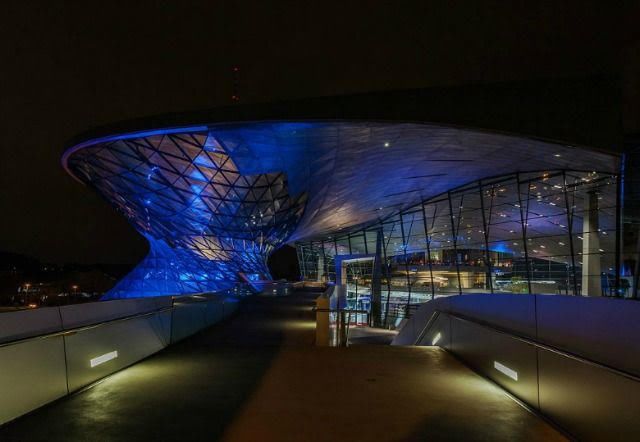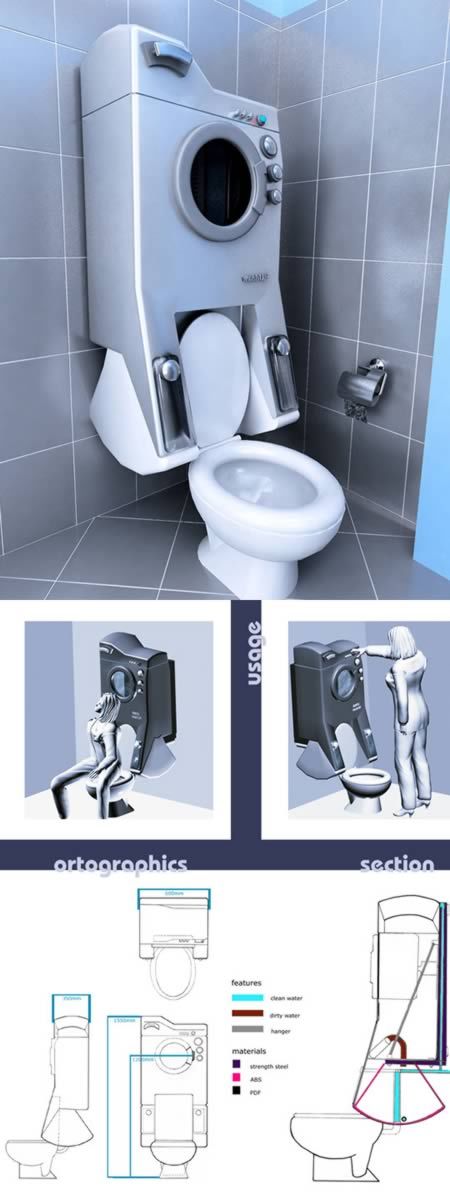6. Lilyfield Housing Redevelopment in Sydney, Australia

This project was launched and opened in February 2011, and received a 5 Green Star Rating. Green Star is the equivalent of the LEED certification for the development of commercial and government buildings in Australia.
That makes the Lilyfield Project the first social housing development to be brought forward by the Green Building Council of Australia under the banner of the Green Star ratings. It has somewhere between 60-80 apartment units, varying in size.
The complex has also been built in a prime location for access to public transport and made bicycle friendly to reduce the need for large car parking lots. It also offers an efficient outdoor lighting system which only uses 2.5% of the total electricity produced in Australia, and uses solar water heating systems and Photovoltaic panels.
7. Smog-Eating Building in Mexico City, Mexico

(The Manuel Gea González Hospital, Mexico City, Mexico, with “Smog-Eating” Facade – Image Courtesy of Elegant Embellishments)
In an effort to promote the health infrastructure of the country, the Ministry of Health of Mexico funded this $20 billion dollar Green project. Of course, the building wasn’t built to literally eat smog, but the Manuel Gea González Hospital, found in Mexico City, was given some real upgrades.
The technology was discovered and developed by a Research and Design manufacturing studio that concentrates on initiatives for environmentally friendly buildings, called Elegant Embellishments. Using a coating of photocatalytic titanium dioxide on thermoformed shells, a building facade was designed.
This lovely and functional white facade now covers over 2500 square meters of the building. The coating has a unique effect, whereby it neutralizes the effects of air pollution (from the thousands of passing cars each day) when it reacts with light.
A similar type of system was also exhibited in Milan’s Palazzo Italia.
8. SolaRoad in Krommenie, Netherlands

The brainchild of multiple organizations, after the development of the prototype in 2010, further projects were underway by 2011. These projects use various developments in solar technology to create bike paths made from solar panels.
In October 2014, the first official SolaRoad was opened in Krommenie, about 72 meters (which is 236 feet) in length. This path as it stands is a connecting point between two suburbs.
If and when the path is extended, it could potentially be used to power a number of suburban homes. This pathway has not only been a step forward in alternative transportation, but it’s also paving the way to energy consciousness and healthier infrastructure.
No wonder a couple from Idaho, who first proposed the idea of solar paneled roads, raised $2 million dollars through crowdfunding alone!
9. KK Plastic Roads in Bangalore, India

Our introduction to what could be the road to the future. Yes, pun absolutely intended.
K.K Plastic Waste Management, a company based out of the city of Bangalore has created an incredible new innovative way to turn plastic waste into roads. Started by two brothers, Amjad and Ahmed Khan, their research into alternate uses of plastic led them to the discovery that plastic and bitumen (also commonly known as asphalt), are very similar substances.
Not only does this work towards reducing the amount of waste piling up in landfills across the country, it also assists in the mending and strengthening of battered roads covered with cracks and holes from years of ordinary wear and tear.
They laid down their first road in 2002, after getting approval from the Central Road Research Institute, Delhi.
10. Zero Waste Fashion
















